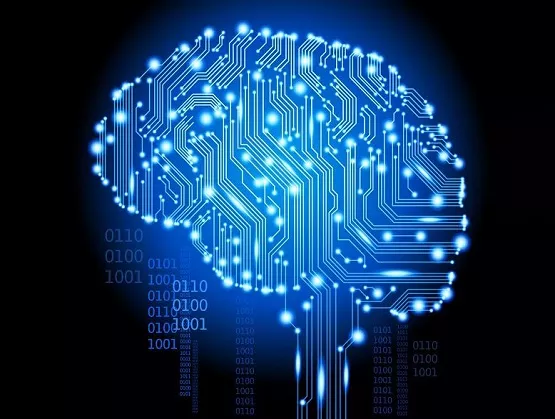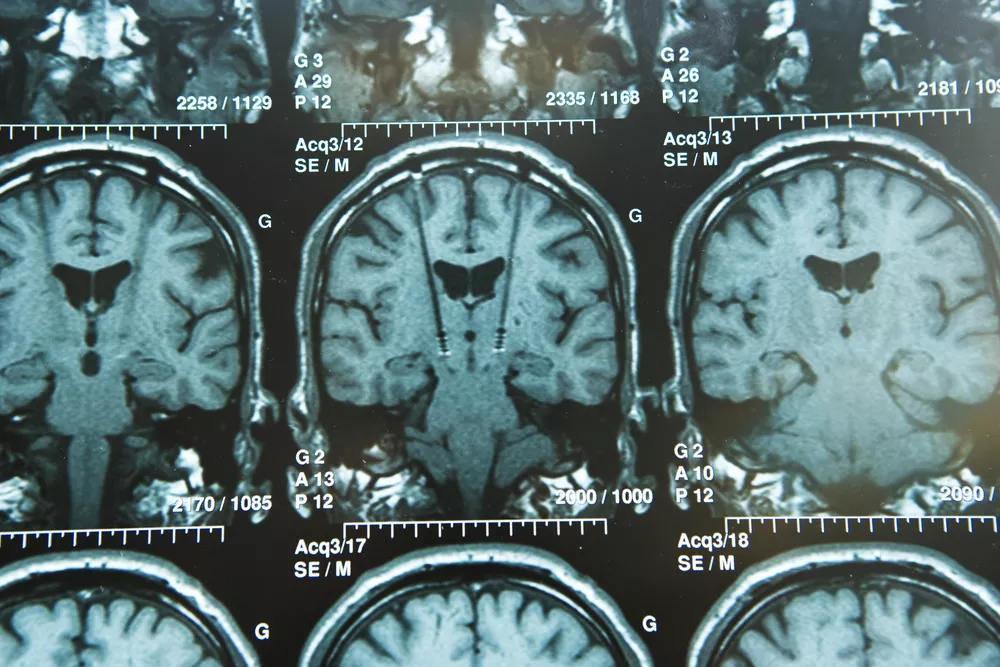
Electronics innovation is inching tantalizingly closer to the day when treating neurological disorders such as epilepsy and migraine could be as easy and convenient as dropping into a medical clinic for a minor medical procedure – brain surgery. What today is highly invasive surgery promises to be reduced to a doctor’s office visit as chip engineers work to tether the delicate, complex neurochemical workings of the human brain to the hard wiring of electronics.
The goal is to use electrical stimulation to trigger the release of therapeutic doses of natural brain chemicals using small implantable devices in order to restore normal brain functioning, reduce human suffering and help slash the financial burden to economies around the world.
The advances come as neurological disorders remain the leading cause of disability worldwide, afflicting up to 1 billion people, a number projected to rise sharply in the years to come, according to the World Health Organization. In 2015, conditions including dementia, epilepsy, multiple sclerosis, Parkinson’s disease and stroke accounted for more than 94 million disability-adjusted life years (DALYS), the number lost globally to ill-health, disability or early death – a total expected to swell to over 103 million by 2030. In the U.S. alone, brain diseases cost nearly $800 billion each year, according to a paper published in the Annals of Neurology in 2017.
Bioelectronics Innovation Outpaces Drug Development
The trendlines are heightening the urgency to develop new, effective medical treatments, yet traditional drug development alone may not be able to keep pace: The journey to create drugs ready for pick-up at your local pharmacy takes, on average, 10 years from the time they are hatched in the lab.
 “Unfortunately, pharma is unlikely to help address this problem because drug discovery is becoming slower and more expensive,” George Malliaras, Prince Philip Professor of Technology at the University of Cambridge, noted in his presentation, Electronics on the Brain, at last month’s virtual FLEX 2021 conference. In marked contrast, microelectronics are “becoming cheaper and faster every year.”
“Unfortunately, pharma is unlikely to help address this problem because drug discovery is becoming slower and more expensive,” George Malliaras, Prince Philip Professor of Technology at the University of Cambridge, noted in his presentation, Electronics on the Brain, at last month’s virtual FLEX 2021 conference. In marked contrast, microelectronics are “becoming cheaper and faster every year.”
Dating back to the 1950s with the development of implantable pacemakers to re-establish normal heart rhythms, bioelectronics medicine could help demystify how the brain processes information and lead to more effective treatments for neurological disorders. The field has come a long way since devising cochlear implants to treat hearing impairments in the 1970s, designing spinal cord stimulators to relieve chronic pain in the 1980s and targeting the brain with electrical impulses to help relieve Parkinson’s disease symptoms and neuropsychiatric disorders in the 2000s.
Deep Brain Stimulation Implants Help Treat Neurological Disorders
Deep brain stimulation involves implanting electrodes in the brain through small holes in the skull to send electrical impulses to specific target areas. Used in the U.S. since 1997 to treat Parkinson’s disease, deep brain stimulation can improve motor skills in patients suffering from other conditions too such as dystonia, tremors and epilepsy, enabling them to “function normally, with the flip of a switch,” Malliaras said. Researchers are even testing the technology to treat autoimmune and other disorders not originating in the brain.
 But the large, rigid electrodes used in the surgery are hostile to the soft, subtle confines of the brain. What’s more, implanting the devices is invasive, with multiple follow-up surgeries typically needed to replace batteries, reposition electrodes or replace deteriorating electrical leads.
But the large, rigid electrodes used in the surgery are hostile to the soft, subtle confines of the brain. What’s more, implanting the devices is invasive, with multiple follow-up surgeries typically needed to replace batteries, reposition electrodes or replace deteriorating electrical leads.
To overcome these drawbacks, engineers are now designing electronics that can process complex neurological signals to treat brain disorders while conforming to its soft tissue. Malliaras said that means developing electronics capable of interacting with the diverse chemicals the brain uses to bridge the tiny gaps between neurons, called synapses, in order to transmit the neurochemical impulses that give rise to thinking and behavior.
Mixed Conductors Form Key Connection Between Electronics and Brain
Mixed conductors, materials that can transmit brain signals both ionically and electrically, promise to form this key connection by enabling the development of high-resolution cortical electrodes that monitor neurons without penetrating the brain. They’re also a springboard to the development of flexible pin-sized electronic devices that make neurosurgery much less invasive.
 That brings new hope for more effective treatments of neurological disorders like epilepsy. Traditionally, the first line of defense against seizures has been antiepileptic drugs, an ineffective treatment since 30% of patients are resistant to the medications, Malliaras said. Another drawback are side effects that include short-term memory loss, fatigue, blurred vision, speech impairments dizziness, nausea and weight loss. Resective surgery – disconnecting the diseased portion of the brain that causes seizures – is often the next option, but is not possible in cases when the procedure would risk damaging circuitry that controls cognition and behavior.
That brings new hope for more effective treatments of neurological disorders like epilepsy. Traditionally, the first line of defense against seizures has been antiepileptic drugs, an ineffective treatment since 30% of patients are resistant to the medications, Malliaras said. Another drawback are side effects that include short-term memory loss, fatigue, blurred vision, speech impairments dizziness, nausea and weight loss. Resective surgery – disconnecting the diseased portion of the brain that causes seizures – is often the next option, but is not possible in cases when the procedure would risk damaging circuitry that controls cognition and behavior.
Flexible Substrates Fuel Development of Tiny, Expandable Bioelectronics Devices
With recent advances, studies on lab rats show that the miniature electrodes designed using flexible substrates made possible by photolithography can conform to the brain’s curvatures and creases to measure the slight electrical signals emitted by individual neurons without penetrating brain tissue and deliver drugs to prevent seizures in animals. Measuring just micrometers in width, these horseshoe-shaped microfluidic devices can pump GABA, a natural neurotransmitter that acts as a brake against neuronal excitability throughout the nervous system, through their minute perforations into the ion exchange membrane of the brain to prevent epileptic seizures.
“The data from the research is very exciting, but the path to the clinic is long,” Malliaras said.
 Still, the findings are a step forward in better understanding the brain and treating its pathologies. Today, microfluidic devices are under development to localize drug delivery in order to bypass the blood-brain barrier and destroy remaining brain cancer cells after a tumor is removed. The devices promise not only to improve cancer treatment since a broad array of cancer drugs can’t cross the protective barrier, but to enable doctors to administer cancer-fighting drugs in smaller doses to help reduce side effects.
Still, the findings are a step forward in better understanding the brain and treating its pathologies. Today, microfluidic devices are under development to localize drug delivery in order to bypass the blood-brain barrier and destroy remaining brain cancer cells after a tumor is removed. The devices promise not only to improve cancer treatment since a broad array of cancer drugs can’t cross the protective barrier, but to enable doctors to administer cancer-fighting drugs in smaller doses to help reduce side effects.
Implantable electronics today are used to bring relief to sufferers of chronic pain. However, the sizeable paddle-type electrodes involve invasive surgery under general anesthesia and a hospital stay of a few days. An alternative is to implant smaller flexible devices through an outpatient spinal tap with local anesthesia, an approach with its own disadvantages. The devices are less efficient than paddles in delivering electrical stimulation and tend to shift position as the body moves, so are seen as an unreliable solution. That leaves patients to choose between an effective treatment requiring invasive surgery and a less intrusive but less effective alternative.
One promising solution combines bioelectronics with soft robotics to enable expandable implants containing microfluidic channels that can be activated mechanically. The device’s malleable paddle electrode can be rolled up inside a needle, inserted with a final tap and then pneumatically unrolled for treatment.
While the device so far has been tested only on human cadavers, it could spur the design of a broader category of expandable microfluidics devices that minimize the invasiveness of neurosurgery and get patients back on their feet sooner. The tiny flexible electronics could be available to veterinarians to treat dogs in as soon as next year, Malliaras said, and “hopefully someday in the not-to-distant future they’ll be used to treat human patients.”
Michael Hall is a marketing communications manager at SEMI.